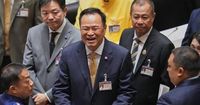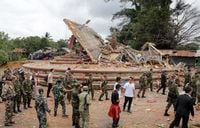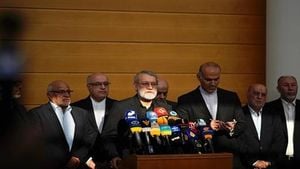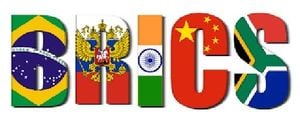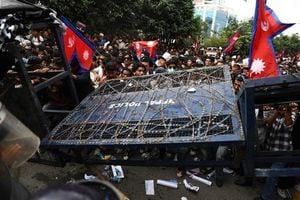In the wake of a deadly border clash between Cambodia and Thailand in July 2025, the ripples of conflict continue to shape politics, livelihoods, and media narratives across the region. The five-day confrontation—one of the worst between the two neighbors in a decade—left at least 48 dead and saw hundreds of thousands of civilians temporarily displaced, according to Reuters. Even as the guns fell silent after a ceasefire brokered by Malaysia on July 28, the aftershocks have been felt in everything from labor markets to international journalism, and now, to the highest levels of Thai politics.
On September 29, 2025, Thailand’s newly elected Prime Minister, Anutin Charnvirakul, stood before Parliament and pledged to tackle the border dispute through diplomacy while addressing the country’s economic woes and promising a push for a more democratic constitution. “My government will support the referendum and public participation to uphold the country’s constitutional monarchy,” Anutin declared in his inaugural speech, as reported by the Bangkok Post. He also committed to fighting corruption and crime, vowing to “restore faith and happiness to the Thai people.” But with a self-imposed four-month deadline to call elections—part of a deal with the People’s Party, which now acts as opposition—Anutin’s time to deliver on these promises is short.
Central to Anutin’s agenda is a proposed referendum on whether Thailand should revoke the existing memorandum of understanding (MoU) on border issues with Cambodia. The agreements in question—a 2000 land boundary framework and a 2001 accord on maritime cooperation—have been the backbone of joint survey and demarcation efforts for years. Yet, following the recent escalation, public scrutiny in Thailand has intensified. “In order to avoid further conflict, the government will push for a vote on whether Thailand should revoke the existing memorandum of understanding,” Anutin told reporters, as cited by Reuters.
However, experts warn that simply scrapping the agreements could open a dangerous void. Panitan Wattanayagorn, a political scientist at Chulalongkorn University, cautioned, “Their revocation may not be a direct solution to the conflict between Thailand and Cambodia, because it could create a vacuum. The government must make clear what will replace them, and this has to be agreed by Cambodia as well.” The risk is clear: without a mutually accepted framework, the border could become even more volatile.
The July fighting, which erupted along undemarcated points of the 817-kilometer (508-mile) border, was rooted in a long-standing dispute over the Preah Vihear temple and surrounding land. The International Court of Justice (ICJ) ruled in both 1962 and 2013 that the site belongs to Cambodia, a fact that’s deeply significant for Cambodians. Yet, as Seng Vanly reported for Cambodianess, this legal context was often downplayed or ignored in Thai and Western media coverage of the clashes.
“The clashes along the Cambodia-Thailand border in July 2025 were not only fought with artillery and air power. They were also fought in newspapers, on television screens and across social media,” Vanly wrote. Thai media, he observed, consistently portrayed Cambodia as the aggressor, using terms like “provocation,” “violation,” and “invasion,” while describing Thai actions as “response” or “retaliation.” Western outlets, including Reuters, often led with Thai claims that Cambodia had broken the truce, relegating Cambodia’s denials and the ICJ rulings to secondary status—or omitting them altogether. “The bias may not have been deliberate, but the result was the same: a lopsided picture of the conflict,” Vanly argued.
Cambodia’s journalist association (CCJ) publicly criticized this coverage as biased and unethical. The reaction from Bangkok was swift and defensive: three Thai media associations cut ties with their Cambodian counterparts, dismissing the criticism as political. The rift over media ethics quickly became another front in the broader nationalist standoff. “The debate about fair reporting turned into another nationalist gesture, as if even questioning Thai coverage was an insult to the nation,” Vanly noted.
The impact of these media narratives goes beyond headlines. As Vanly explained, “Media framing shapes how people think and how governments act. If Thai citizens are constantly told that Cambodia is the aggressor, then it becomes easier for leaders in Bangkok to harden their positions, close borders or even threaten to tear up agreements. If ceasefires are reported in ways that only highlight one side’s violations, then building trust becomes much harder.” The result: deepening mistrust, growing resentment, and a harder path to reconciliation.
Meanwhile, the human cost of the conflict has been profound. As many as one million Cambodians are estimated to have returned home from Thailand since the border dispute, reported Reuters. The mass return has created both challenges and opportunities in Cambodia. Despite increased logistics costs and economic uncertainty, companies—both multinational and local—are seizing the moment to hire these returning workers. The hiring surge is a rare bright spot, offering hope for economic expansion even as the region grapples with the fallout of conflict.
For the people who live along the border—farmers, traders, monks, and schoolchildren—the stakes are personal and immediate. “The people who live along the border, the farmers, traders, monks, and schoolchildren who were forced to flee in July, are the ones who pay the highest price when stories are told through a biased lens. They deserve to see their reality reflected truthfully, not twisted to fit another country’s narrative,” Vanly wrote in Cambodianess.
Looking ahead, the path to lasting peace and stability remains uncertain. Anutin’s diplomatic overtures and promises of reform face stiff political headwinds at home, with the opposition People’s Party poised to challenge his initiatives in Parliament. The referendum on the MoU could redefine the legal and diplomatic landscape, but only if handled with care and with input from both sides. The lessons of July’s conflict—on the battlefield and in the newsroom—underscore the need for balanced reporting, mutual respect, and a commitment to dialogue over division.
For now, the border remains tense, the politics fraught, and the narrative contested. As Cambodia and Thailand inch toward a possible new chapter, the hope is that the voices of those most affected—on both sides of the line—will finally be heard above the din.
